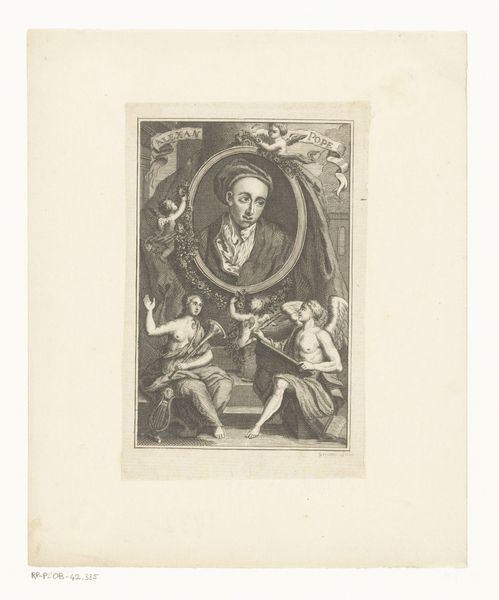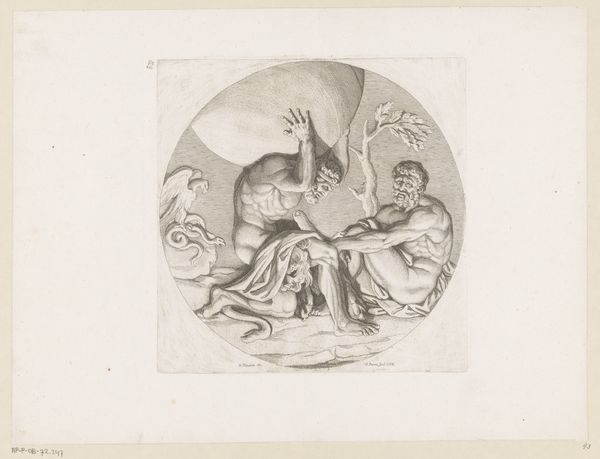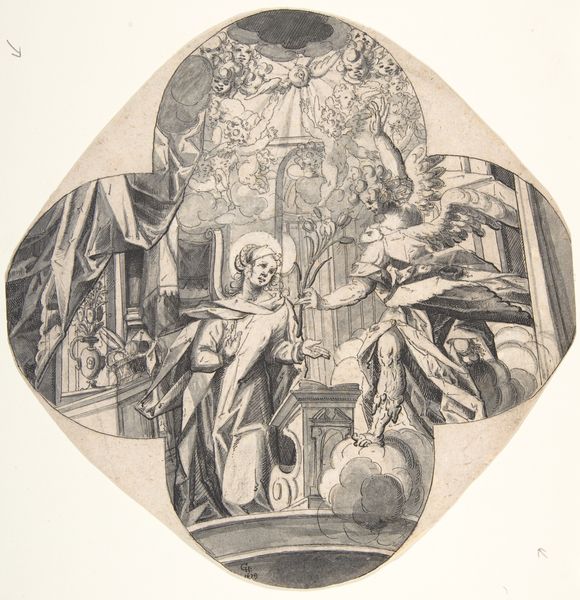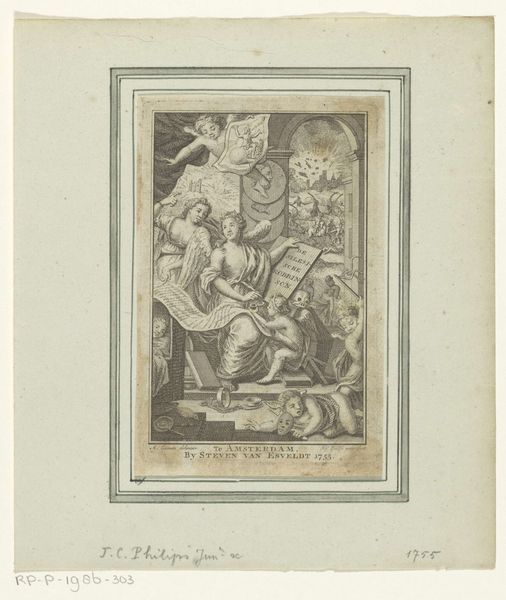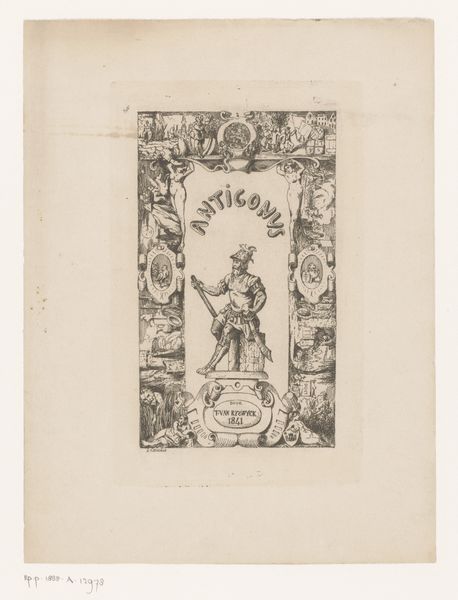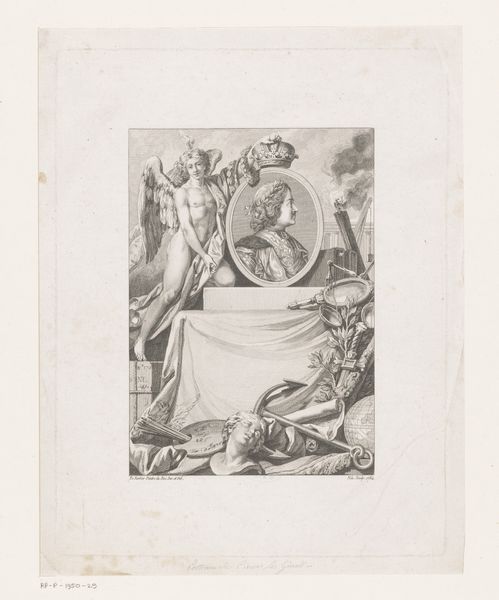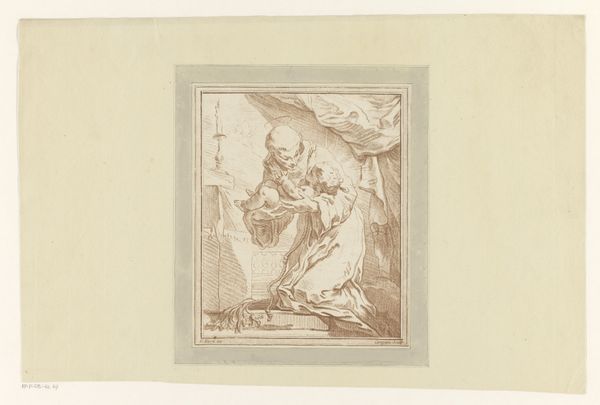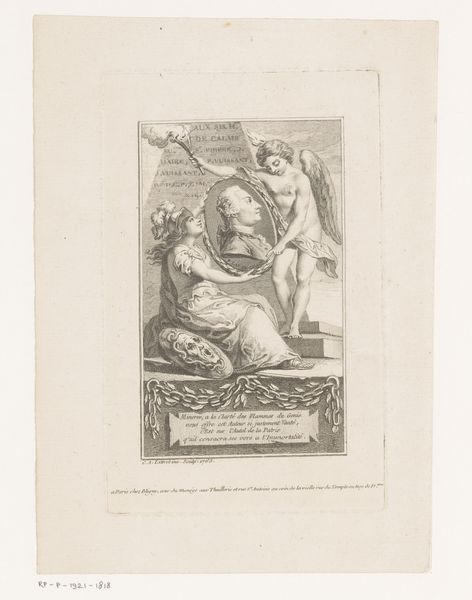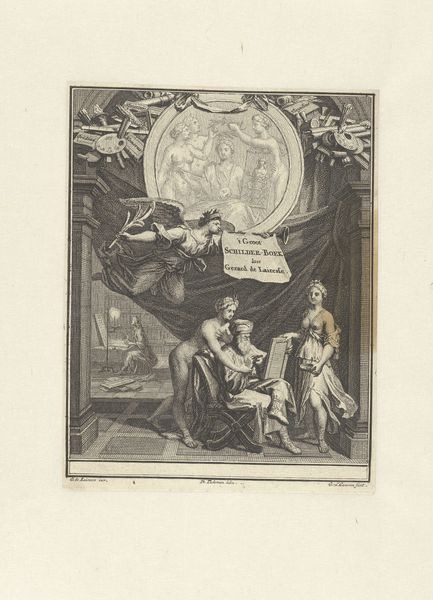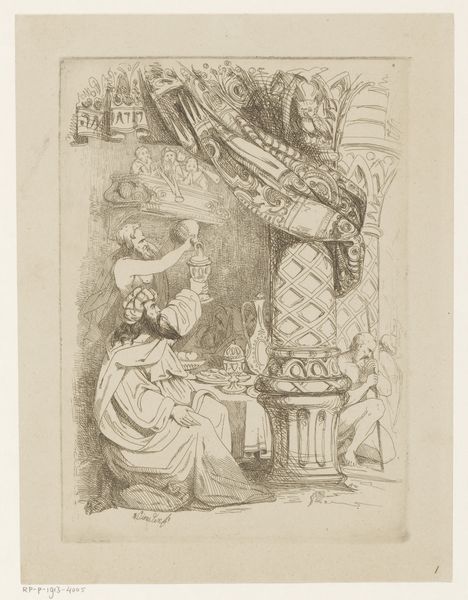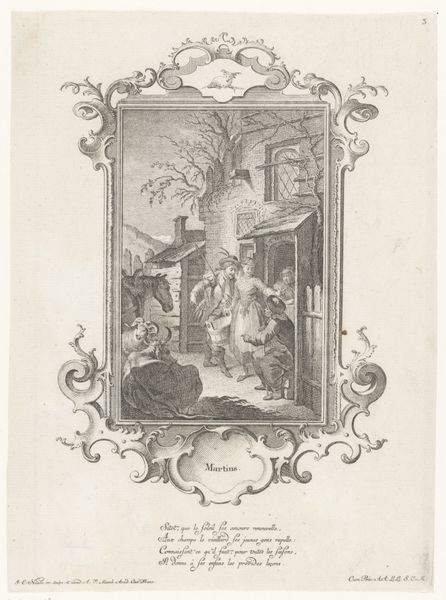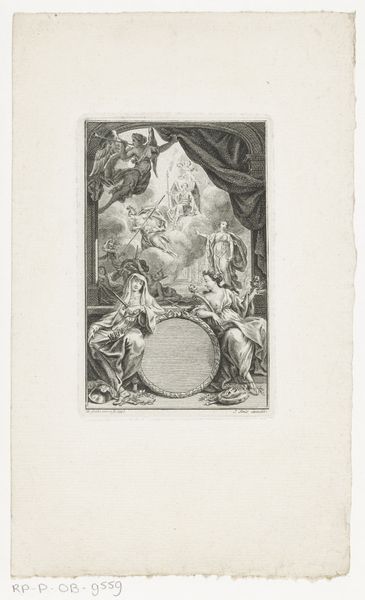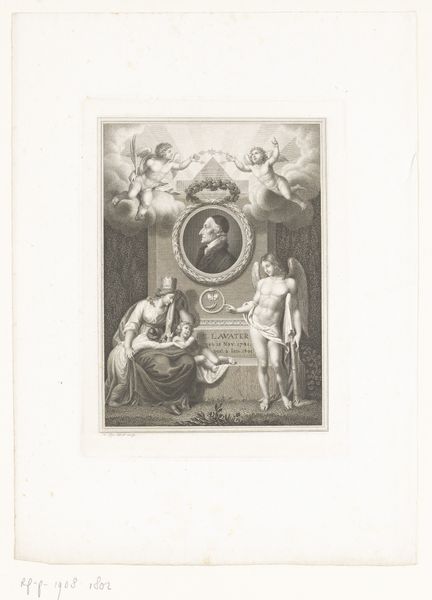
Satirische allegorie rond het grafmonument van Johann Caspar Lavater 1801 - 1807
0:00
0:00
drawing, ink, engraving
#
portrait
#
drawing
#
neoclacissism
#
ink
#
engraving
Dimensions: height 190 mm, width 155 mm
Copyright: Rijks Museum: Open Domain
This satirical allegory, made by Balthasar Anton Dunker, is an etching on paper. The process of etching involves covering a metal plate with a waxy, acid-resistant substance. The artist then scratches an image into this coating, exposing the metal beneath. When the plate is submerged in acid, the exposed lines are eaten away, creating grooves that hold ink. The plate is then printed, transferring the image to paper. Here, the sharp lines of the etching lend themselves well to the biting satire, allowing for precise detail in the figures and symbols. The contrast between light and shadow, achieved through careful manipulation of line density, adds to the drama of the scene. Dunker's skilled technique allows him to convey complex ideas about death, memory, and the legacy of Johann Caspar Lavater. This print is not simply an image, it's the result of an intricate, labor-intensive process, deeply embedded in the culture of its time. Understanding the ‘how’ of this work encourages us to look beyond the surface, engaging with its social and historical context.
Comments
No comments
Be the first to comment and join the conversation on the ultimate creative platform.
